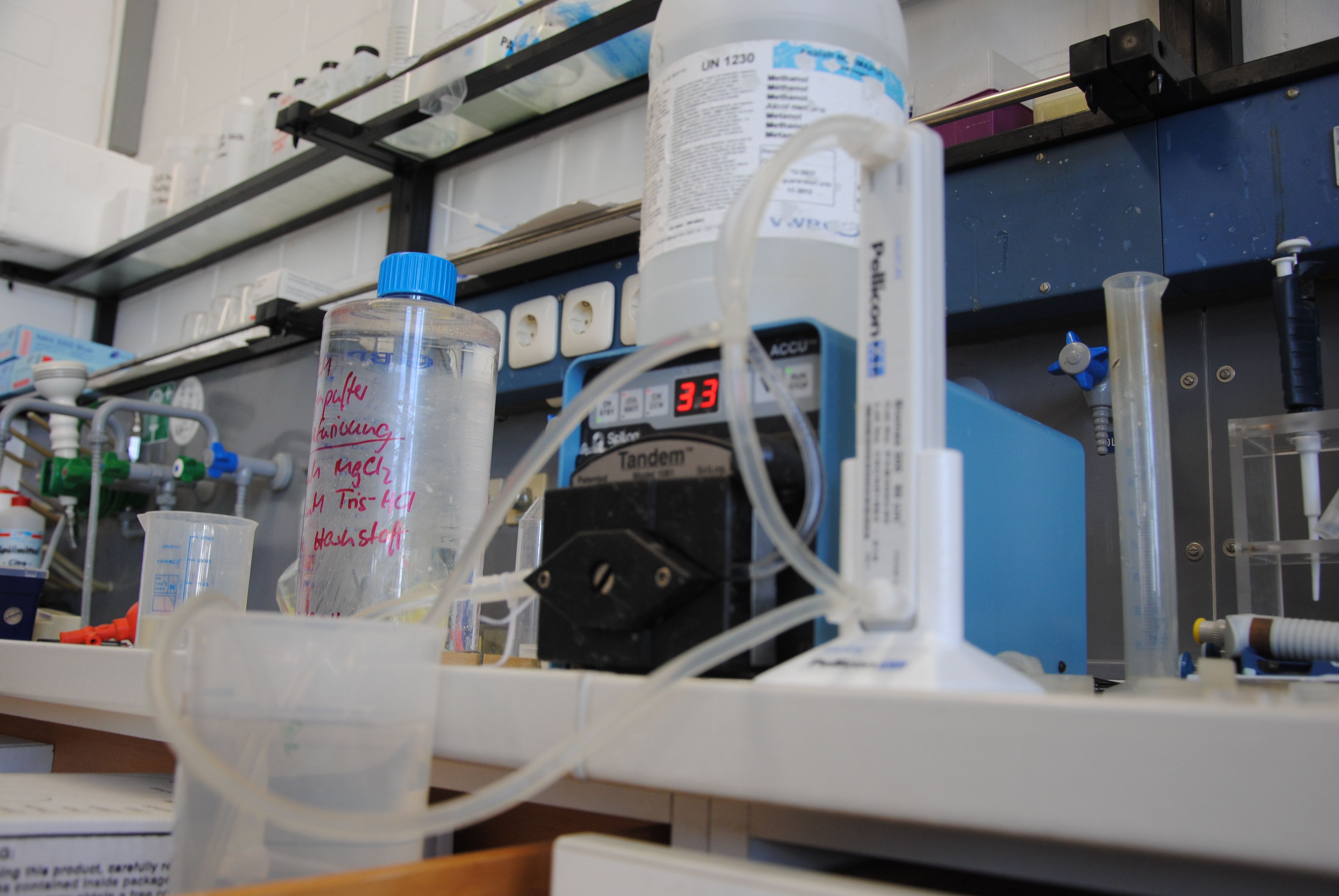Team:Bielefeld-Germany/Results/S-Layer/Guide/5
From 2011.igem.org
(Difference between revisions)
(Created page with "{{Bielefeld_2011_Header}} =Filtration of the cell lysate= Centrifugation does not remove all of the cell debris so a tangential flow ultrafiltration step with a 300 kDa membran...") |
|||
| (7 intermediate revisions not shown) | |||
| Line 1: | Line 1: | ||
{{Bielefeld_2011_Header}} | {{Bielefeld_2011_Header}} | ||
| - | + | <html><img src="https://static.igem.org/mediawiki/2011/2/28/Bielefeld-header-guide.png"/><p></p></html> | |
=Filtration of the cell lysate= | =Filtration of the cell lysate= | ||
| - | Centrifugation does not remove all of the cell debris | + | [[Image:IGEM-Bielefeld2011-Pump.JPG|400px|thumb|right|A Milipore Pellicon XL 300 membrane actuated with a SciLog TANDEM 1081 peristaltic pump.]] |
| + | |||
| + | Centrifugation does not remove all of the cell debris, therefore a tangential flow ultrafiltration step with a 300 kDa membrane is performed. The retentate is collected. Instead of this device you can also use a simple dead-end sterile filter (0.22 µm poresize) but it is easier the way described above (the dead-end filter gets clogged after some time...). | ||
| + | |||
| + | With the cleared lysate the histidine affinity tag comes into play - [[Team:Bielefeld-Germany/Results/S-Layer/Guide/6 | want to know how]]? | ||
| - | + | <html> | |
| + | <div style="text-align:center; width:535px; margin-left:auto; margin-right:auto;"> | ||
| + | <img id="Image-Maps_8201110281849269" src="https://static.igem.org/mediawiki/2011/0/0b/Bielefeld-Germany-2011-Navigationbar.png" usemap="#Image-Maps_8201110281849269" border="0" width="535" height="82" alt="" /> | ||
| + | <map id="_Image-Maps_8201110281849269" name="Image-Maps_8201110281849269"> | ||
| + | <area shape="rect" coords="22,12,170,62" href="https://2011.igem.org/Team:Bielefeld-Germany/Results/S-Layer/Guide/2" alt="Jump to intersection" title="Jump to intersection" /> | ||
| + | <area shape="rect" coords="182,7,330,57" href="https://2011.igem.org/wiki/index.php?title=Team:Bielefeld-Germany/Results/S-Layer/Guide" alt="Return to beginning" title="Return to beginning" /> | ||
| + | <area shape="rect" coords="353,10,501,60" href="https://2011.igem.org/Team:Bielefeld-Germany/Results/S-Layer/Guide/6" alt="Next page" title="Next page" /> | ||
| + | </map> | ||
| + | </div> | ||
| + | </html> | ||
Latest revision as of 02:47, 29 October 2011


Filtration of the cell lysate
Centrifugation does not remove all of the cell debris, therefore a tangential flow ultrafiltration step with a 300 kDa membrane is performed. The retentate is collected. Instead of this device you can also use a simple dead-end sterile filter (0.22 µm poresize) but it is easier the way described above (the dead-end filter gets clogged after some time...).
With the cleared lysate the histidine affinity tag comes into play - want to know how?

 "
"

